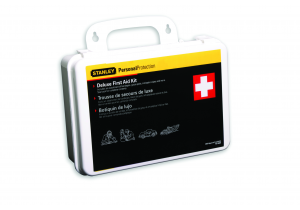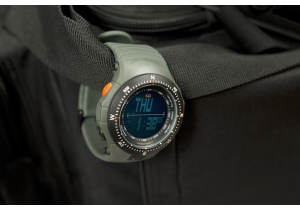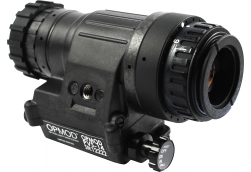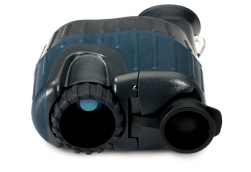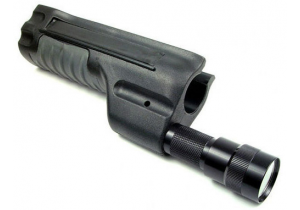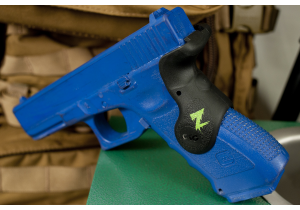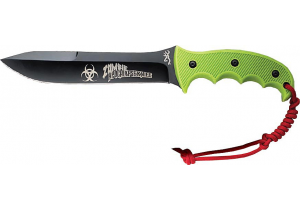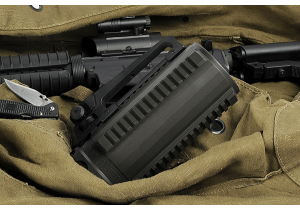Tag Archives: plague
8 Tips For Surviving A Zombie Apocalypse
Here at What Culture we consider ourselves to be experts in many different things. Sure we have massive brains filled with the latest gaming news, movie tidbits and comic book geekery but did you know that we’re also the leading experts on surviving a zombie apocalypse? Darn tooting we are! In fact, if the Government called upon us to protect you lovely people from having your brains eaten by your dead grandma we’d know exactly what to do. So it seems only fair that we share this information with you – our dear readers – just in case we’re a bit busy helping the Governments of the world sort out their living dead problems.
So let’s begin with the basics.
1. How Likely is A Zombie Outbreak
According to the BBC, researchers in Canada concluded that unless a Zombie outbreak was dealt with quickly and aggressively it would in fact lead to the downfall of civilisation. You see, people have actually been funded to look into this kind of ‘eventuallity’ under the pretence that the idea of an outbreak of Zombieism works in much the same way as any other alien infection and thus the research can help prepare for such a real life scenario. Personally we think this is all part of the Government’s attempts to keep Joe Public in the dark. Research is being undertaken to prepare for Zombies, like it or not.
If you’re still unsure about the reality of Zombies then just take a look at nature and you’ll see that such infections already exist within the animal world. Take Toxoplasmosa Gondii for example. It lives inside the body of the common Rat, but the only place it can bread is inside the intestines of a Cat so it takes over the brain of Mr Rat and makes him get himself eaten. The parasite actually programmes the Rat, much like a similar parasite could programme the human brain. In fact over half the world’s population is infected by this little bugger already. What if it were to evolve? Scary thought, hu?
Need more examples? How about Haiti, home of the term Zombie. People there were infected with an acute neurotoxin that actually wiped the memories of the victims, left them in a barely conscious state and caused them to shuffle around performing basic daily tasks such as eating. There are books and documentaries on this – and we don’t mean ones called Zombie Flesheaters. And if you’re STILL not convinced then have a look at the symptoms of Mad Cow’s Disease – muscle spasms, dementia, rage, changes in gait – it’s all there in black and white for the sceptics out there. All that’s keeping us safe at the moment is the fact that none of the aforementioned causes have taken hold … yet.
2. Know Your Zombies
Like with most things there are different types of Zombie. As we haven’t been face to face with any as of yet it’s safe to assume that any of the weird shit you’ve seen on TV or in a video game could actually be true. However, tradition dictates a certain type of Zombie – at least in the first instance. Who knows if they can evolve or adapt over time?
Here’s what we do know:
1. Zombies can be both the reanimated corpses of the already dead OR any living thing that has been bitten and thus transformed.
2. Zombies are slow. Any notion that they may be able to run should be disregarded. Sure, if you’ve just been turned then you may have use of your full leg muscles a while but rigor mortis reaches maximum stiffness after 12 hours, so beyond that we should assume the creature cannot run.
3. The brain of a Zombie is not entirely dead. It continues to operate at 0.5%. No Zombie will ever win a pub quiz then – but they are brighter than most of the people who go on Jeremy Kyle’s TV show.
4. The primary weapons of a Zombie are it’s hands/claws and it’s teeth. You’re not likely to change sides if you get scratched but a bite will damn sure bring about a sudden case of death. Well, more like a slow agonising case actually.
5. The original cause of a Zombie plague grossly affects how us humans can be turned. For example, if the cause is airborne then you might become a Zombie just by breathing. Likewise the original Zombies may just be reanimated corpses and you could be turned by a bite – the transference of saliva which carries a parasite etc. Or in some cases you may already be carrying whatever it is that turns you (like in The Walking Dead) and when you die you will become a member of the undead without ever coming into contact with one. Let’s just hope that if/when Zombies walk the Earth the only way for you to be turned is by a bite. At least that gives you more of a fighting chance at survival.
ZOMBIE HISTORY – The Plague That Is Zombies
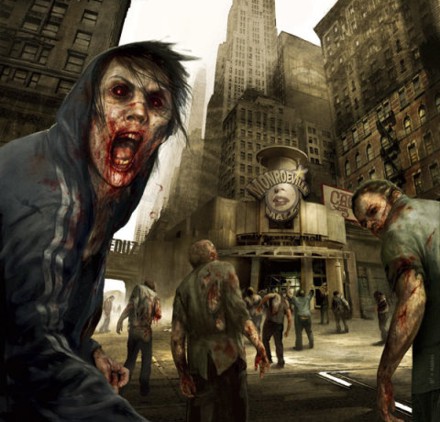 ‘I hereby resolve to kill every vampire in America” writes the young Abraham Lincoln in the best-selling 2010 novel “Abraham Lincoln: Vampire Hunter.” Honest Abe doesn’t quite make good on his promise, and the grim results are all around us. Today, vampires spring from the shadows of our popular culture with deadening regularity, from the Anne Rice novels to the Twilight juggernaut to this year’s film adaptation about the ghoul-slaying Great Emancipator. Lately we’ve also endured a decadelong bout with the vampire’s undead cousin, the zombie, who has stalked films from “28 Days Later” to “Resident Evil” (the next sequel of which is due out this fall) and the popular TV show “The Walking Dead.”
‘I hereby resolve to kill every vampire in America” writes the young Abraham Lincoln in the best-selling 2010 novel “Abraham Lincoln: Vampire Hunter.” Honest Abe doesn’t quite make good on his promise, and the grim results are all around us. Today, vampires spring from the shadows of our popular culture with deadening regularity, from the Anne Rice novels to the Twilight juggernaut to this year’s film adaptation about the ghoul-slaying Great Emancipator. Lately we’ve also endured a decadelong bout with the vampire’s undead cousin, the zombie, who has stalked films from “28 Days Later” to “Resident Evil” (the next sequel of which is due out this fall) and the popular TV show “The Walking Dead.”
Purists will hold forth on the differences between vampire and zombie, but the family resemblance is unmistakable. Both are human forms seized by an animal aggression, which manifests itself in an insatiable desire to feed on the flesh of innocents. (Blood, brains, whatever; it’s a matter of taste.) Moreover, that very act of biting, in most contemporary versions of both myths, transforms the victims into undead ghouls themselves.
Our vampires and zombies (as well as such poor relations as werewolves) all serve as carriers for vaguely similar saliva-borne infections. These mythical contagions are especially odd because they have so few analogues in the natural world. Indeed, there is really only one: the rabies virus.
A fatal infection of the brain, rabies is particularly devastating to the limbic system, one of the most primitive parts of the brain. Fear, anger and desire are hijacked by the virus, which meanwhile replicates prolifically in the salivary glands. The infected host, deprived of any sense of caution, is driven to furious attack and sometimes also racked with intense sexual urges. Today we know that most new diseases come from our contact with animal populations, but with rabies this transition is visible, visceral, horrible. A maddened creature bites a human, and some time later, the human is seized with the same animal madness.
Known and feared for all of human history—references to it survive from Sumerian times—rabies has served for nearly as long as a literary metaphor. For the Greeks, the medical term for rabies (lyssa) also described an extreme sort of murderous hate, an insensate, animal rage that seizes Hector in “The Iliad” and, in Euripides’ tragedy of Heracles, goads the hero to slay his own family. The Oxford English Dictionary documents how the word “rabid” found similar purchase in English during the 17th century, as a term of illness but also as a wrenching state of agitation: “rabid with anguish” (1621), “rabid Griefe” (1646).
The roots of the vampire myth stretch back nearly as far. Tales of vampire-like creatures, formerly dead humans who return to suck the blood of the living, date to at least the Greeks, before rumors of their profusion in Eastern Europe drifted westward to capture the popular imagination during the 1700s.
In its original imagining, though, the premodern vampire differed from today’s in one crucial respect: His condition wasn’t contagious. Vampires were the dead, returned to life; they could kill and did so with abandon. But their nocturnal depredations seldom served to create more of themselves.
All that changed in mid-19th century England—at the very moment when contagion was first becoming understood and when public alarm about rabies was at its historical apex. Despite the fact that Britons were far more likely to die from murder (let alone cholera) than from rabies, tales of fatal cases filled the newspapers during the 1830s. This, too, was when the lurid sexual dimension of rabies infection came to the fore, as medical reports began to stress the hypersexual behavior of some end-stage rabies patients. Dubious veterinary thinkers spread a theory that dogs could acquire rabies spontaneously as a result of forced celibacy.
Thus did rabies embody the two dark themes—fatal disease and carnal abandon—that underlay the burgeoning tradition of English horror tales. Britain’s first popular vampire story was published in 1819 by John Polidori, formerly Lord Byron’s personal physician. The sensation it caused was due largely to the fact that its vampire, a self-involved, aristocratic Lothario, distinctly resembled the author’s erstwhile employer.
But Polidori’s Byronic ghoul only seduced and killed. It took until 1845, with the appearance of James Malcolm Rymer’s serialized horror story “Varney the Vampire,” for the vampire’s bite to become a properly rabid act of infection. For the first time readers were invited to linger on the vampire’s teeth, which protrude “like those of some wild animal, hideously, glaringly white, and fang-like.” And at the long tale’s end, Varney’s final victim (a girl named Clara) is herself transformed into a vampire and has to be destroyed in her grave with a stake.
Both these innovations carried over into the most important vampire tale of all, Bram Stoker’s “Dracula.” In Stoker’s hands, the vampire becomes a contagious, animalistic creature, and his condition is properly rabid. It is a lunge too far to claim (as one Spanish doctor has done in a published medical paper) that the vampire myth derived literally from rabies patients, misunderstood to be the walking dead. But it is clear that this central act of undead fiction—the bite, the infection, the transferred urge to bite again—has rabies knit into its DNA.
Over time, the vampire’s contagion infected his undead cousin, too. The original zombie myth, as it derived from Haitian lore, also involved the dead brought back to kill, but again without contagion—an absence that carried over to Hollywood’s earliest zombie flicks. In this and many other regards, the most influential zombie tale of the 20th century was nominally a vampire tale: Richard Matheson’s 1954 novel “I Am Legend,” whose marauding hordes of contagious “vampires,” victims of an apocalyptic infection, set the whole template for what we now think of as the standard zombie onslaught.
Since then, as Hollywood has felt the need to conjure ever more frightening cinematic menaces, the zombie has if anything grown increasingly rabid. The antagonists in Matheson’s novel can, at times, carry on an intelligent conversation with a normal human. By the 2007 film adaptation, starring Will Smith, the infected are howling, lunging, senselessly hateful animals inside a human form. Danny Boyle, the director of “28 Days Later,” has said outright that he modeled his zombie virus on rabies. But even if he hadn’t consciously done so, the name he gave that virus—”Rage”—already draws its power from the same centuries-old supply.
Westerners don’t have much cause to fear death from rabies these days. Thanks to the availability of vaccine, human fatalities in the U.S. have dropped to a handful per year; Britain got rid of the virus entirely in 1902, succeeding in just the sort of national eradication project that apparently stymied the vampire-slaying Abraham Lincoln. Yet the infected bite, the human turned animal aggressor, menaces us as often as ever on our flat screens and nightstands.
Rabies itself may be a distant concern, but the rabid idea, like Varney the vampire, still has teeth—and it still succeeds in spreading itself.
Z.E.R.O. (Zombie Extermination, Research and Operations) Kit by OpticsPlanet
Imagine: You half-hear a low, guttural sound from outside as you lay sleeping. You figure it’s just your stomach after too much delicious Mexican food…![]() but a sudden thud on the outside wall of the house shakes you from a peaceful slumber. Deep within the primal centers of your brain, you realize the dead have risen to claim our once-peaceful realm. What do you do? What do you need?
but a sudden thud on the outside wall of the house shakes you from a peaceful slumber. Deep within the primal centers of your brain, you realize the dead have risen to claim our once-peaceful realm. What do you do? What do you need?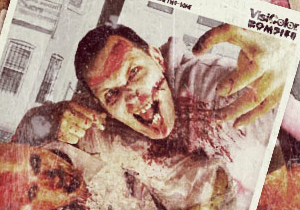 The dead have risen, and they’ve returned as something different. Those you were once closest to now hunger for your flesh, and possibly the Mexican food you had for dinner.
The dead have risen, and they’ve returned as something different. Those you were once closest to now hunger for your flesh, and possibly the Mexican food you had for dinner.
There is no room for error when dealing with the undead.Our Z.E.R.O. (Zombie Extermination, Research and Operations) Kit takes into account all the different aspects of surviving the looming zombie apocalypse. When the undead hordes rise from their shallow graves to wreak havoc on all decent civilization, you’ll need to both fight back (Extermination), and find a cure (Research).
Always be prepared. In the new zombie world you can be king of the hill, or the tastiest treat in town.
Life Post Zombie Apocalypse is Harsh…Survive it!
First, as in any disaster, whether it is a hurricane, blizzard, alien invasion or giant lizard attack, you need basic survival gear. Fighting back will be necessary as well, but you have to survive the elements and everyday hazards before you can mount an offensive.
You’re sure to get a few cuts and bruises along the way so you need good first aid. The Stanley Personal Protection Large First Aid Kit will help you stop bleeding and take care of other wounds in no time. Zombies don’t have the best eyesight, but their sense of smell is on par with a bloodhound’s. There’s no scent as irresistibly alluring as blood, so make sure you clean and dress wounds when they happen. In addition to keeping zombie hordes from tracking you, treating wounds will prevent infection.
Preventing scrapes is the best way to keep blood from attracting zombies, so covering exposed skin with protective gear is essential. Blackhawk S.O.L.A.G. Kevlar Gloves keep hands safe from normal cuts, and the reinforced stitching stops zombie teeth from ripping through flesh and turning a healthy human into the enemy. Best of all, the molded knuckle protectors let you put a hard jab straight down the gullet of a walking dead monster in the event you’re unarmed.
Don’t Lose Your Head, Don’t Miss Your Shot, and Don’t Get Lost.
Knowing your surroundings and where you’re going is essential to survival in any setting. Make sure you’re wearing the 5.11 Tactical Field Ops Watch, which not only tells time, but also has a digital compass so you know your bearings. The integrated SureShot calculator gives you shooting solutions out to 1000ft so that you don’t need to carry one when you’re taking headshots out from 300 meters to save a loved one’s life. Zombies send panic through the hearts of even the most hardened men, so let the 5.11 Tactical Watch take the guesswork out of your long distance shots.
In addition to knowing where you are, seeing what’s around you will definitely help you survive when a chomping, cadaverous fiend comes for a reckoning. For late night viewing, the OPMOD PVS-14 Night Vision Scope will let you peer into the darkness. When patrolling your camp in pitch blackness you have to be absolutely certain you can see everything, but at a distance it can be difficult to differentiate between an injured human and a zombie. For this we added the Thermal-Eye X-50 Thermal Imaging Camera. As we all know, rising from the grave expels most of the heat from a zombie, leaving behind only faint warmth in the lower extremities. So if you view a stumbling figure with warm feet and a cold head, you know to take the shot. Just as the 5.11 Tactical Watch lets you calculate elevation compensation for long shots, the thermal imager helps you shoot with the confidence, knowing you’re only going to re-kill the undead.
No one survives long without batteries. People are going to loot stores for all the batteries they can find when the dead rise, so stock up now with the SureFire 123A Lithium Battery Box. Ten or twenty batteries might be nice to have, but you’re not planning on living for just a few months, you’re going to live a full lifetime. The included SureFire battery box has FOUR HUNDRED batteries. They’re going to prove to be one of the most valuable forms of currency in the post-zombie world. While we only included one box in our Z.E.R.O. Kit, you might want to pick up a couple extra, plenty for yourself and plenty for trading. Just a few boxes could make you one of the richest men in the world!
If you do run out of batteries and need to power your kit, asolar charger can become your best friend. Zombies have many horrifying abilities, but the one thing they can’t do is blot out the sun, so when you set up the powerful Brunton SOLARIS Portable Solar Panel Battery Charger you’ll enjoy 62 watts of power, which will keep your precious electronics working long after the power grids have shut down. As a side benefit, if a zombie attacks you near the solar charger you can yell out, “Left hand on Green!” and the zombie will forget your brains and focus on completing the task given them.
While the hunger for human flesh overrides nearly all zombie impulses, certain childhood memories will temporarily replace their hunger. This is a short-lived solution though, as zombiescan’t tell right from left, and the resulting frustration will send them into a rage.
Give the Undead Nightmares by Taking the Fight to Them!
Once you’ve gathered your basic survival gear together, you need to think about how you’re going to dispatch those creeping, gnawing, nearly unkillable monsters. Your rifle, shotgun and handgun (one gun will not keep you alive long) need to be enhanced for maximum zombie-slaying effectiveness.
Let’s start with the bread and butter of any zombie-fighter: the shotgun. Zombies are only dangerous at close range, and they often stand idly until a delicious human comes along. If you’re clearing a house at night and a zombie steps around a corner you need to see exactly what you’re shooting at, and the SureFire Benelli M1 Super 90 Forend Weaponlight provides a bright 120 lumens of light without changing your grip or weighing down your shotgun. It uses the Lithium 123A batteries from the SureFire Battery Box, so you won’t need to worry about power. It’s both super durable and powerfully bright. This will give you plenty of light to see those lifeless eyes roll back once you’ve given your zombie attacker peace.
While you need to see if a zombie is hunting you in the blackness of night, to turn the tables and go from hunted to hunter you need the absolute best in rifle scopes and red dot sights. Enter EOTech and theirZombie Stopper Holographic Weapon Sight. This red dot sight gives you an appropriately zombie-themed reticle, and placing that biohazard design on a ghoulish skull will help steel you to always take the shot without hesitation. Even if you’re using the Zombie Stopper for hunting food it will always serve as a reminder that you must be aware of your surroundings.
Little known fact: zombies love the woods. If you’re hunting deer to feed your family keep in mind that a walking creature of the night could pop out from behind any tree or bush and make a feast of your brain.
When a large herd of zombies is converging on your position you may not have time to reload your rifle or shotgun and may need to quickly transition to your sidearm. Since speed is of the essence it’s best to have a laser grip on your Glock (the best zombie-slaying handgun). The Crimson Trace Zombie Edition Laser Gripactivates with a normal grip, so you don’t need to worry about pressing a button to turn it on. Seeing the red laser on your target ensures you’ll never miss a shot.
As a side benefit, zombies are drawn to the red light in much the same way a cat is (no surprise, as zombie infection comes from a feline-human hybrid virus). If you run out of ammo you can use this red laser grip to distract the zombies and make your escape!
That brings up an important point: much like batteries, ammunition will be scarce once the zombies cause the fall of civilized society. There are a few ways to deal with this. First,knives are both an outstanding survival tool and stalwart zombie killer. Browning understands this very well, which is why they developed a Zombie Apocalypse Knife.
The seven inch blade is for precision zombie hunters who sever brain stems like ninja assassins. The drop point blade is extra strong and will hold up to all the rigors of a zombie-plagued world.
While you’ll have to learn to rely on your knife when taking on the zombie masses, shooting a rifle is still easier and willdispatch zombies at a faster rate when faced with a large group of these horrors. As ammunition is sure to run low, you’ll need a way to reload your empty cartridges.
RCBS has reloading gear so tough you could bash out an undead brain and continue reloading immediately. From the RCBS Pro-Melt Furnace, for re-forging your bullets, to their Progressive Press, for getting your bullets into cartridges, you’ll be all set for the next nightmarish wave.
Don’t forget that at any moment a zombie can appear, so if you’re sitting by a campfire enjoying a glass of water you may not have your knife or gun in hand. It’s best to make sure ANYTHING in your hands is tactically sound, so never drink from a regular cup. Drink from the cup of survivors and champions the world over. The OPMOD Battle Mug is a super strong cup, made from aluminum and features a crenellated base for extra zombie smashing power. You can go from thirst-quenching to death-dealing in less than .45 seconds. We tested that.
Search for a Cure or You’ll Search for a Grave.
Unfortunately, all the gear so far is simply a stop-gap as long as the zombie disease rages on. You can take down thousands or even millions of risen dead and hardly make a dent in the overall undead army. Don’t think short term when prepping for the apocalypse. If you want a safe world for your children and grandchildren you must find a cure. For this you need the best laboratory equipment.
We’ve included Qorpak Beakers, Labnet Pipettes and aCelestron Microscope so you can take samples and study the innermost workings of zombies. The destructive nature of their cells might lead you to a better understanding of their life expectancy or how to possibly treat their symptoms so they no longer hunger for human flesh.
Properly tamed, a zombie can do the physical labor of 30 men without tiring. You will only be able to determine if a zombie can be tamed through laboratory research.
Many hours of grueling arguments, exhaustive research and bite-dodging testing went into developing the selection ofzombie survival gear below.
The Z.E.R.O. Kit also includes night vision devices, solar chargers, multi tools, tactical vests, sunglasses, and much more. We’ve completed all this work to give you the best chance of surviving when Death returns to Earth with hell by his side. You only need to do two things: buy the Z.E.R.O. Kit and fight for your life.
All the zombie gear in this kit is listed below so you can purchase the items separately, but remember that the kit was very carefully put together to cover all your bases. Each item you choose NOT to buy is one less day you’ll live.
IF YOU THOUGHT ZOMBIES WHERE TOUGH – Try Surviving Yellowstone’s super volcano
For preppers, it’s the ultimate end game: surviving the eruption of Yellowstone’s super  volcano.
volcano.
While some folk worry about an asteroid strike bringing about the end of the world as we know it, as scientists say it did for the dinosaurs 65 million years ago, North America is actually sitting on its own extinction-level event waiting to happen.
“Everything would be wiped out; it would take years for the climate to recover and decades for the rivers to clear up because everything would be choked with volcanic ash for a wide area around the eruption site,” said Kelly Russell, professor of volcanology at the University of British Columbia. “The southern latitudes of Alberta, Saskatchewan and Manitoba would all see ash cover, how thick it would be depends on the winds and the amount of magma.”
Russell stresses that such super eruptions are extremely rare — the last one happened before human civilization — but that they can and do happen, and Yellowstone, in Yellowstone National Park in Wyoming, is an active field that has seen three massive eruptions.
He compares Yellowstone to Mount St. Helens in Washington state in 1980.
“It produced one cubic kilometre of magma, and we saw ash fall from it in southern B.C., a small amount, but it was there, and when we look at the very largest eruptions that have taken place at Yellowstone, they can spew out a thousand cubic kilometres, so that’s a thousand times larger than the Mount St. Helens eruption that’s in everybody’s minds.”
Russell points out that two feet of ash from the Crater Lake eruption in Oregon 7,700 years ago can be found in Oliver, B.C., and in the banks of the Bow River in Calgary. He says if Yellowstone cuts loose, the southern Canadian prairies could get covered in many feet of ash, and the American states closest to Yellowstone would be smothered with an even thicker layer of the sterile rock powder, killing off livestock and leaving them unable to grow food.
“The ash is terrible, take a window and grind it into a coarse flour, then breath that in, it does terrible things to the human body. It would be important to have masks and filters, if you were trying to survive it,” Russell said. “The United States would stop being a food-exporting nation and starting being a food-importing nation.”
Yellowstone’s volcano doesn’t have the classic menacing cone shape, so many people don’t know that a magma chamber bigger than New York City lies beneath the steaming surface.
640,000 years ago, animals similar to elephants, rhinoceroses and zebras roamed the plains of the United States when Yellowstone blew — and it took out the animals and every other living thing that couldn’t fly away from the blast.
Scientists estimate Yellowstone’s volcano explodes every 600,000 to 700,000, and some say the time could be coming for another eruption. If it blows, the chances of survival sound bleak, but that’s not stopping some survivalists from preparing.
“Some people who visit there say there are more hot springs popping up there, and there is more of a sulphur smell that’s stronger than ever. You take from it what you want and I just pay attention to it a little more than the average person, just in case,” said Jason Charles, a firefighter in New York City. “I don’t want it to be a curve ball we don’t see coming. I keep it in the back of my head.”
Charles was a paramedic on 9/11 and saw thousands of people struggling to breath through the toxic dust. He has special dust and ash filters for his gas mask in case of another NYC disaster, or if Yellowstone blows.
“I know some people who have bought UV lights, in case they need to grow their own food – but that’s also assuming that the power grid stays up, but then there’s a space issue, how much could you grow?” he said. “It’s better to store food that will last.”
Charles has a one-year supply of food for his family, including his wife and four children. Meal-ready-to-eats (MREs), canned pasta and lots of canned fruit are stuffed into his apartment and his storage locker. He prepares for all sorts of disasters because he says no one should depend on the government to save them.
“The government couldn’t handle (Hurricane) Katrina. Compared to Yellowstone, Katrina was a drop in the bucket,” he said. “I have always heard as a rumour, they would wait for the masses to die and whatever survivors are left, that’s who they’d take care of, because they can’t take care of hundreds of millions of people we have living here in the United States.”
Jake Lowenstern, a geologist with the U.S. Geological Survey, is the guy in charge of the Yellowstone volcano observatory.
“Worst-case scenario, a super eruption is a thousand cubic kilometres of material gets sent out of the magma chamber. When that happens it’s going to send out a lot of ash, and it circles the globe and changes the climate for years, drops the temperature for a few years,” Lowenstern said.
He said while a super eruption is highly unlikely, and even if it does happen not many would survive, it doesn’t hurt to prep.
“Things you can do to prepare for one kind of disaster are useful for any kind of disaster: lots of food, water, medical supplies and batteries on hand, and for an eruption, add good masks, air filters and weather stripping to keep the ash out of homes.”
Massive eruptions of the past:
— Archeologists say human beings barely survived the last super eruption on Earth. 74,000 years ago, Toba blew up on the Island of Sumatra. It cloaked the planet in sulphur, reducing the temperature by 20 degrees, wiping out growing seasons with snow cover nearly all year and causing mass starvation. Geneticists say the disaster reduced the human population to as few as 1000 people, thus causing the genetic similarity between individuals which is traced to the same time period.
— A volcanic eruption has been blamed for plunging civilization into the Dark Ages and triggering the bubonic plague. In his book Catastrophe, archeological journalist David Keys pinpoints a Krakatoa explosion in 535 AD. He says with the power of two billion Hiroshima bombs it darkened the sky and caused drought and flooding all around the world, including in Northeast Africa, which led to a bumper crop of rodents that passed their infected fleas onto rats and mice on European ships docked for trade off of southern Egypt, beginning the spread of the plague of Justinian.
— In 1815, the Tambora volcano erupted in the East Indies. Global temperatures dropped. Europeans and North Americans called it a “year without summer.” Snow fell in New York in June. Frost was recorded in each of the summer months and crops failed. 200,000 people died in Eastern and southern Europe from starvation and typhus.
— In 1783, Iceland’s Laki Volcano erupted. 9,000 people died in Iceland and thousands more died around the world from crop failure, disease and starvation. Temperatures dropped 13 degrees Celsius.
— Mount Pinatubo erupted in 1991 in the Philippines, a comparably small explosion, ejecting 20 million tonnes of sulphur. Scientists say it reduced global temperatures by about 2 degrees.
ZOMBIE FURNITURE WTF
Looking for furniture that will both tie the room together and make your guests gag with fear?
BRC Designs probably has what you’re looking for. The razor-sharp minds over at the design house, based in Spartanburg, South Carolina, have unleashed a terrible plague upon the world of home decor: “zombie furniture.” These are seats and couches with dripping blood, raw patches that look like skin was torn off and a general appearance of getting ready to animate itself and shuffle over to eat your flesh. And the horror of this festering line doesn’t end there, with its origin stretching all the way over the ocean to Ghana’s famous carpenters of death.
An Xiao Mina at Core77 has the full story of how this sleep-disturbing (yet swanky!) stuff got made, but here’s the short version. BRC chief Benjamin Caldwell traveled to Ghana to apprentice with the country’s coffin builders, who produce unique boxes meant to reflect the lifestyle and accomplishments of the deceased. Picking up a plane and chisel, Caldwell settled in with Eric Anang, grandson of the renowned artisan Kane Kwei, whose studio has churned out coffins in the guise of red fish, flashy cars and, weirdly, a pig for the businessman who introduced swine to Accra.

Once he’d honed his skills, Caldwell then got around to creating his own monsters. His team digs holes in the dirt to create molds for wet concrete, which they pour in and then abandon in the ground for 30 days. (Some people in Ghana are buried in a soft bed of concrete, FYI.) After the month is up and the material has developed a little “character,” they pry it out and use it as the base for furniture.
Here’s where it gets raw, reports Mina:
To top it off, they stain the pieces with acid, itself a variable process, to create a deathly, out-from-the-grave feel. They focused on the rough patches in particular: “We stained these areas with a dull black and brown as if rotting flesh and then we dripped glossy red stain over the area creating the appearance of an oozing, rotten wound.” This variance keeps with the zombie theme but also contrasts sharply with the necessary precision of coffin-making….
“The first person who saw it said ‘It looks like someone died on this chair.'”
The name that Caldwell picked for his blood-soaked line? That would be “Risen in 30 Days,” a riff on the furniture’s resurrection from its soil jail.
While it may cause some people to curl into fetal positions, the furniture is indisputably original and kind of intriguing, like being at the scene of a gruesome murder. And to give it a positive spin, it won’t leave a wet spot on your pants or dress should you sit on it, like a real rotting carcass might.
I don’t see any prices listed for the “zombie chaise lounge” or “zombie sofa,” so you’ll want to hithim up on email if you want one of these stunners. Also available in the BRC catalog are less-abominable offerings, such as this chair made from old piano hammers and a seat called “Impractically Comfortable” containing 282 mini bottles of Southern Comfort. Arachnophobes, however, will hate the “Spider” line of furniture, with its multiple spindly legs and black hairlike backing.
All photos courtesy of BRC Designs.





